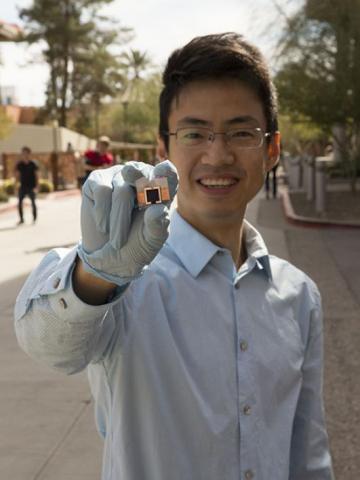A collaboration between researchers at Stanford University and Arizona State University (ASU) resulted in a new perovskite-silicon tandem solar cell that converts sunlight to electricity with 23.6% efficiency. The team stated that work is being put into reaching 30% efficiency, and they believe that they "could be there within two years".

In the tandem cell created by Stanford and ASU, the top cell is composed of a perovskite compound and the bottom cell is made of silicon that is specifically tuned to capture infrared light. The perovskite and silicon cells boast efficiency of 15 and 21%, respectively. ASU provided the silicon bottom cell, while Stanford researchers fabricated the perovskite compound and subsequent cells. Throughout the yearlong collaboration, the ASU team also provided modeling support to design the tandem for maximum current generation, while the Stanford team characterized the tandem cells.
A major problem that perovskite-based PV cells suffer from is poor stability - degrading at a much faster rate than silicon in hot and humid environments. Additionally, perovskite solar cells have suffered from parasitic absorption, in which light is absorbed by layers in the cell that don't generate electricity, which is problematic for tandem cells because that light needs to reach the silicon bottom cell for maximum efficiency. The researchers improved the stability of the perovskite solar cells in two major ways: 'first, we replaced an organic cation with cesium. Second, we protected the perovskite with an impermeable indium tin oxide layer that also functions as an electrode.'
The team was able to apply the indium tin oxide layer with help from researchers at Stanford that developed a thin, protective layer that shields the delicate perovskite from the subsequent deposition of the final indium tin oxide layer without contributing to parasitic absorption, further boosting the cell's efficiency. In addition, it was a challenge to apply the perovskite itself to the silicon layer. Due to the silicon cell's rough nature, the relatively thin perovskite cannot be effectively layered on top. A doctoral student at ASU developed a method to create a planar surface only on the front of the silicon solar cell, ideal for the perovskite to be applied to the silicon.